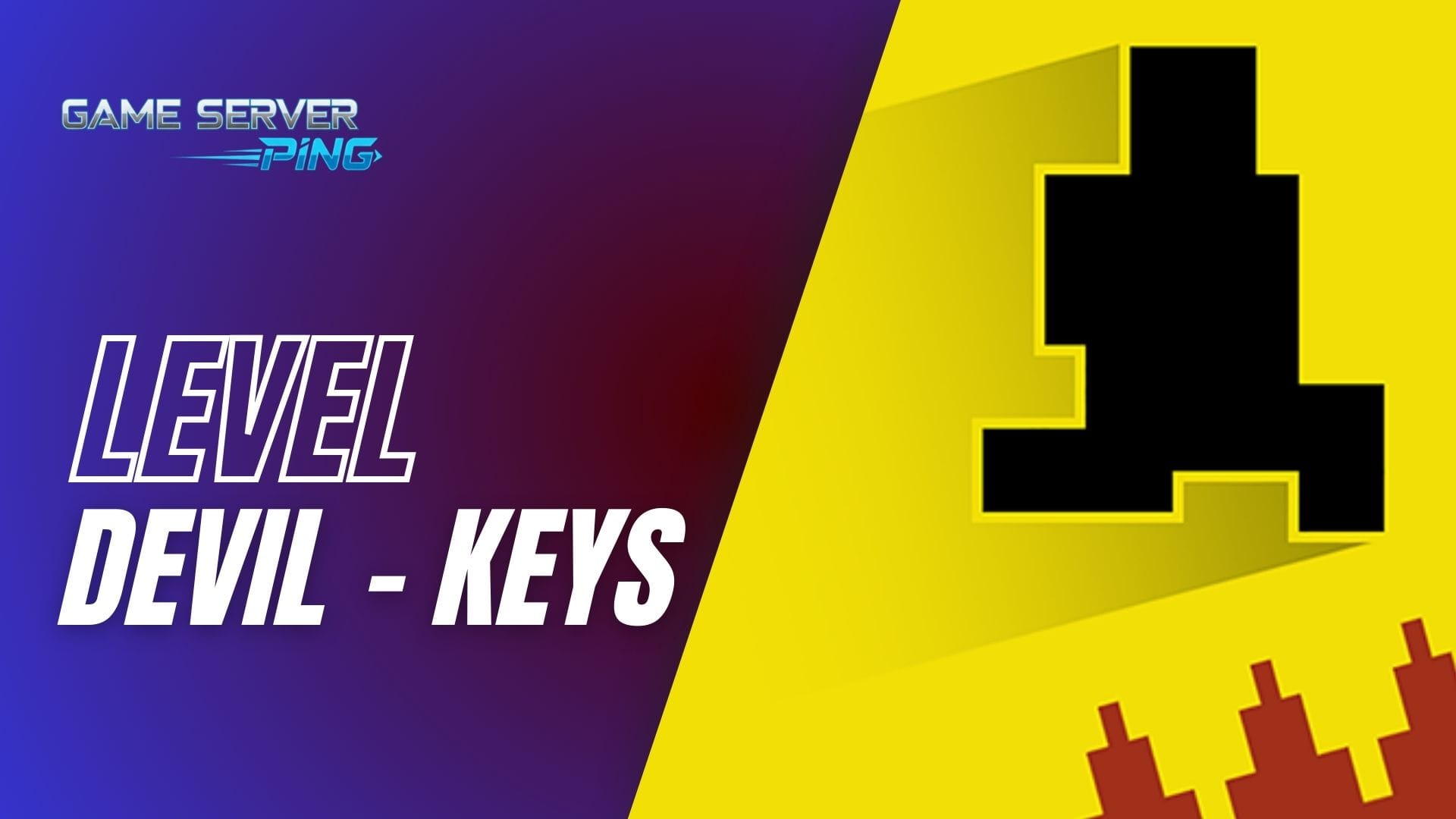Now Reading: Why Fortnite Ping Is High but Internet Speed is Good – 10 Reasons & 10 Fixes
- 01
Why Fortnite Ping Is High but Internet Speed is Good – 10 Reasons & 10 Fixes

Why Fortnite Ping Is High but Internet Speed is Good – 10 Reasons & 10 Fixes
Every Fortnite player has faced this frustrating situation: you run an internet speed test, and the results look great—fast download, solid upload, and even a decent ping on paper. But then you load into Fortnite, and suddenly your character feels delayed, your builds don’t place instantly, and enemies hit you before you even see them peek.
This raises the big question: why does Fortnite ping feel bad even when your internet speed test looks perfect?
The answer lies in understanding the difference between bandwidth and latency—two terms that often get confused but affect your gameplay in completely different ways.
Bandwidth vs Latency: What Speed Tests Don’t Tell You
What Is Bandwidth?
Bandwidth is essentially how much data your internet connection can handle at once. Think of it as the width of a highway:
- High bandwidth = more lanes for cars (data) to travel on
- Low bandwidth = fewer lanes, meaning traffic jams when multiple devices are active
This is what speed tests usually highlight—download speed and upload speed—measured in Mbps (megabits per second).
What Is Latency (Ping)?
Ping, also known as latency, is different. Instead of how much data you can move, it’s about how quickly data travels from your device to the Fortnite servers and back.
- Low ping (20–40ms) = instant response, smooth building, accurate edits
- High ping (80ms+) = delayed walls, sluggish edits, frustrating fights
In other words:
- Bandwidth = how much you can download/upload
- Ping (latency) = how fast your commands reach Fortnite servers
This is why you can have blazing-fast speeds on a test but still suffer from bad Fortnite ping—the speed test and the game are measuring completely different things.
Related Read: If you also play Valorant, check out Ping vs Latency in Valorant to understand how this works across different games.
Why Speed Test Results Don’t Match Fortnite Ping
Different Servers, Different Results
When you run an internet speed test, it usually connects you to the nearest test server—often provided by your ISP or a nearby data center. This makes the latency look great.
But Fortnite doesn’t use that same server. It connects you to Epic Games’ servers, which might be in another city, region, or even country. That extra distance—and the routing paths in between—can make your in-game ping much higher than your test results.
ISP Routing Priorities
ISPs (internet service providers) don’t always optimize their network for gaming traffic. They might choose a cheaper path to Fortnite servers instead of the fastest one, creating extra “hops” along the way. Each hop adds milliseconds, which stack up fast.
To see this clearly, gamers often use a traceroute test. It shows how many steps your data takes before it reaches the Fortnite server—and often reveals where delays are happening.
Pro Tip: If you also struggle with ping in other games, try the Valorant Ping Test tool or the Fortnite Ping Test tool to compare how routing differs per game.
Why Am I Lagging on Fortnite With Good Internet?
Even with a fast connection, here are some hidden reasons why Fortnite might still feel laggy:
Fortnite Lagging but Internet Is Fine
- Your ISP routing is inefficient
- Fortnite servers are overloaded during peak hours
- Your device connects to a slightly more distant server automatically
Local vs Global Internet Quality
Your speed test only measures local performance. Fortnite measures global performance—your connection across multiple internet backbones. That’s why your internet can seem perfect locally but still perform poorly when talking to Epic’s servers.
Speed Tests vs In-Game Reality
What Speed Tests Measure (and Why It’s Misleading for Gamers)
When you run an internet speed test, the results typically highlight download speed, upload speed, and ping. While these numbers look impressive, they don’t always reflect what you’ll experience inside Fortnite matches.
Download & Upload Speed Focus
- Speed tests are designed for everyday users—streaming, browsing, or downloading files.
- The focus is on throughput (bandwidth): how fast your connection can push or pull data.
- Games like Fortnite, however, don’t need massive download speeds; they need stable and low-latency connections.
A gamer might see 200 Mbps download / 20 Mbps upload on a speed test and assume they’re good to go. But Fortnite doesn’t care if you can download a movie in 3 minutes. It cares how fast your actions reach the game server and how quickly it responds back.
Latency to Speed Test Server vs Fortnite Server Latency
- Speed tests usually connect to the nearest test server, often hosted by your ISP or a local hub. That’s why your ping shows as super low (like 10 ms).
- Fortnite connects you to Epic Games servers, which may be hundreds or even thousands of miles away.
- The route your data takes to Fortnite’s servers can add delays, spikes, or instability, even if your speed test looks perfect.
For example, you might get 10 ms ping on a speed test but see 80–100 ms ping in Fortnite, because the game server is farther and the routing path is more complex.
Why Fortnite Ping Is Different From Speed Test Ping
Server Locations Vary
Fortnite’s servers are spread across specific regions (like North America East, Europe, Asia, etc.). If you’re far from the nearest Fortnite server, your ping will naturally be higher—even if your internet is blazing fast.
This is different from speed tests, which usually connect you to the nearest possible server to make your results look good.
👉 Tip: You can check Fortnite’s server ping directly using tools like the Fortnite Ping Test to see real in-game latency rather than relying on generic speed tests.
ISP Routing Priorities for Gaming vs Generic Speed Tests
- ISPs often optimize routing to their own speed test servers, which is why your ping looks flawless there.
- But when it comes to gaming traffic like Fortnite, the ISP may route your data through longer or less efficient paths.
- Some ISPs prioritize streaming and web browsing over gaming packets, causing higher ping, jitter, or even packet loss.
That’s why you may wonder: “Why am I lagging on Fortnite with good internet?” The answer lies in routing and latency, not raw internet speed.
Bandwidth vs Latency: The Gamer’s Perspective
When gamers talk about “good internet,” they often point to high Mbps numbers. But in reality, latency (ping) is what defines a smooth Fortnite experience.
Bandwidth Explained (Why Mbps Isn’t Everything)
- Bandwidth = capacity. It’s the maximum amount of data that can be transferred per second.
- High bandwidth is great for downloading games, watching Netflix, or streaming on Twitch.
- Fortnite, however, uses very little bandwidth—usually less than 1 Mbps upload and 3 Mbps download during gameplay.
So, whether you have 50 Mbps or 500 Mbps, Fortnite won’t play drastically better because the game doesn’t need that much data throughput.
Latency Defined (The True Gamer’s Metric)
- Latency = delay. It measures how quickly your input (like shooting, building, or moving) reaches the Fortnite server and comes back to your screen.
- This is measured as ping (in milliseconds). Lower is better.
- A difference between 30 ms and 80 ms can be the difference between editing a wall first—or being eliminated.
Example:
- Bandwidth: A wide highway. Lots of cars (data) can travel at once.
- Latency: The travel time. Even on a huge highway, if it takes longer to get to the destination, you’ll feel the delay.
Why Latency Matters More in Fortnite
- Fortnite is a real-time competitive shooter. Every millisecond counts.
- Even if your internet speed test shows 200 Mbps, if your ping to Fortnite is 80 ms, you’ll experience input delay, build lag, or ghost shots.
- This explains why players often say: “Fortnite lagging but internet is fine.”
Why Am I Lagging on Fortnite with Good Internet?
It’s one of the most frustrating gaming experiences: your internet speed test looks great, yet Fortnite still feels laggy. This happens because lag isn’t just about Mbps—it’s about latency, routing, and server connections.
4.1 Fortnite Lagging but Internet Is Fine
Many players report that Fortnite lags even when streaming or browsing works perfectly. The reason is simple: services like YouTube or Netflix don’t require instant responses. They buffer data in advance. Fortnite, on the other hand, depends on real-time communication with the game server.
- Streaming works smoothly because small delays are hidden by buffering.
- Fortnite lag is instantly noticeable because even a 50 ms delay can throw off your edits or shots.
Common Reasons for High Ping in Fortnite Despite Good Speed
Even if your speed test is fast, these factors can cause bad ping in Fortnite:
Server Distance and Region
- Fortnite automatically places you on the closest server region, but if that region is far away, your ping will naturally be higher.
- For example, a player in the Middle East might be routed to Europe servers, creating 80–120 ms ping.
👉 Tip: You can measure your exact Fortnite server latency with the Fortnite Ping Test tool.
ISP Routing and Prioritization
- Internet providers sometimes take indirect routes to reach Fortnite servers.
- Speed test servers are often local, while Fortnite’s servers may be routed through multiple hops.
- Some ISPs also prioritize streaming over gaming packets, increasing in-game ping.
Network Congestion at Home
- Even with fast speeds, multiple devices streaming or downloading can cause packet delays.
- Fortnite traffic is lightweight, but it needs a dedicated, stable path.
Wi-Fi vs Ethernet
- Wi-Fi introduces interference and small latency spikes.
- A wired Ethernet connection is almost always better for consistent Fortnite ping.
Why Speed Tests Don’t Show These Problems
- Speed tests only measure bandwidth and a simple local ping.
- They don’t reflect jitter (ping spikes), packet loss, or long-distance routing delays—all of which hurt Fortnite gameplay.
This explains why so many players ask: “Why am I lagging on Fortnite with good internet?” The short answer is: because speed tests don’t measure what really matters for gaming.
Best Internet Speed for Fortnite (How Much Do You Really Need?)
A common question from players is: “Why am I lagging on Fortnite with good internet?” The truth is, Fortnite doesn’t require lightning-fast internet—but it does need stable and consistent speeds with low latency.
Minimum Internet Speed Requirements for Fortnite
- Download Speed: At least 5 Mbps
- Upload Speed: At least 3 Mbps
- Ping: Under 60 ms for competitive play
Even if you meet these, unstable connections or high ping can still cause Fortnite lagging but internet is fine situations.
Recommended Speeds for Competitive Fortnite
For smooth gameplay, especially if you play ranked or tournaments:
- Download Speed: 50 Mbps or higher
- Upload Speed: 10 Mbps or higher
- Ping: 0–30 ms (ideal)
This setup ensures you don’t run into issues when multiple devices in your home share the connection.
Why Bandwidth Isn’t the Only Factor
- Speed tests focus on bandwidth (download/upload).
- Gaming relies more on latency, jitter, and packet loss.
- That’s why you can have fast speed test results but bad Fortnite ping.
Best Internet for 0 Ping Fortnite (Can You Really Achieve It?)
Every Fortnite player dreams of “0 ping” — instant builds, edits, and shots without delay. While true 0 ms is impossible, you can get extremely close with the right internet setup and location.
What “0 Ping” Really Means
- 0 ping in Fortnite is more of a marketing or gamer slang term.
- Technically, there’s always some latency because your data has to travel through cables, routers, and servers.
- When players say they have “0 ping,” they usually mean 1–5 ms ping—which feels instantaneous.
Best Internet Types for Low Fortnite Ping
Fiber-Optic Internet
- Fastest and most reliable option for Fortnite.
- Offers symmetrical speeds (same upload and download).
- Provides the lowest latency, often 1–10 ms depending on server proximity.
- Best choice if you’re serious about competitive Fortnite.
Cable Internet
- Widely available but has higher latency compared to fiber.
- Still playable but can spike during peak usage hours.
- You might get 20–40 ms ping depending on routing.
DSL (Phone Line Internet)
- Slower and less stable.
- Latency is usually 50 ms+, making it less ideal for competitive play.
Mobile Data & Hotspots
- Not recommended unless it’s your only option.
- Even with 5G, latency can be 40–80 ms or higher due to wireless interference.
How Location Affects Your Ping
- Fortnite servers are located in specific regions (NA-East, NA-West, Europe, Asia, etc.).
- If you live far from a server hub, your ping will naturally be higher.
- For example, a player in New York connecting to NA-East servers might see 5–10 ms, while a player in South Africa might see 120 ms due to distance.
You can measure your closest server response time with the Fortnite Ping Test.
Pro Tips to Lower Your Fortnite Ping Without Upgrading Internet
You don’t always need a new internet plan to fix bad ping. Many times, optimizing your setup and adjusting settings can dramatically improve your Fortnite performance.
Switch to a Wired Ethernet Connection
- Wi-Fi is convenient but unstable. Wireless signals suffer from interference, walls, and distance from the router.
- Ethernet cables provide a direct, stable connection with lower latency.
- Competitive gamers worldwide swear by wired setups because every millisecond counts.
Optimize Router Settings for Gaming
- Log into your router and look for these options:
- QoS (Quality of Service): Prioritize Fortnite or your gaming device.
- UPnP: Ensures smoother communication with Fortnite servers.
- Port Forwarding: Some players report better ping by opening the correct ports for Fortnite.
Close Background Apps and Devices
- Shut down apps like Discord downloads, Steam updates, YouTube, or Netflix running in the background.
- If multiple devices are online, use your router settings to limit bandwidth hogs during gaming sessions.
Consider a Gaming VPN (With Caution)
- A VPN can sometimes improve routing if your ISP takes inefficient paths to Fortnite servers.
- Works best if your default route is congested.
- However, a VPN can also increase ping if the server is far away—test carefully before using in tournaments.
Keep Your Network Hardware Updated
- Outdated routers, modems, or firmware can cause latency issues.
- Upgrade to a gaming router if you consistently face spikes.
- Restart your modem/router weekly to refresh your connection.
Reduce Network Congestion at Home
- Schedule large downloads (like Windows updates or new games) outside gaming hours.
- If multiple gamers live in the same house, consider dual-band routers (2.4GHz for general use, 5GHz for gaming).
I ran a speed test and everything looks perfect, but sometimes Fortnite suddenly shows 9999 ping — is that a real connection failure or just a visual bug, and what should I do right now?
It can be both — sometimes a visual bug in Fortnite shows 9,999ms without a real connection failure, and sometimes it’s an actual server/connectivity problem. Epic has documented cases where patches caused the UI to show 9,999ms even when you’re connected; if it’s widespread after a recent update, check Epic’s status first. If it’s not a known bug, follow the usual fixes (restart the game/router, run the Fortnite ping test, switch regions).
I heard VPNs always make ping worse — is there any situation where using a VPN actually lowers my Fortnite ping (and is that safe for competitive play)?
Yes — but only when your ISP’s default path to Epic’s servers is inefficient or congested. A good gaming VPN or route-optimizing service can sometimes create a faster route and reduce packet loss; however, results are highly connection-specific, so always test before using in tournaments. VPNs are not cheating, but they may add extra hops and increase ping if the VPN route is long.
I’ve got fiber but I still get weird high ping spikes in Fortnite — doesn’t fiber fix latency problems for good?
Fiber generally offers the best baseline for low latency and low packet loss, but it doesn’t automatically fix every routing problem. If your ISP’s backbone or peering is poor (or if traffic is routed indirectly), you can still see spikes despite having fiber. Fiber reduces many causes of lag, but routing and congestion still matter.
When I traceroute to Fortnite I see one hop with big delay — does that mean the ISP is at fault and will they fix it if I call them?
A single slow hop in traceroute often indicates congestion or a slow link along the route — it can be an ISP/backbone issue. Take screenshots or logs (traceroute + repeated pings) and provide them to your ISP; good ISPs may escalate to their peering partners, but fixes aren’t instant. If the slow hop belongs to a backbone or third-party provider, your ISP will need to coordinate upstream. Community threads show this is a common root cause.
Sometimes mobile data gives me better Fortnite ping than my home broadband — why would a cellular connection be faster than cable/fiber for the same city?
Cellular routes can sometimes take a more direct path to the game servers or avoid congested ISP backbones. Mobile networks also often have different peering agreements. That said, mobile is less stable (variable jitter, packet loss), so while it may beat your home line briefly, it’s not a guaranteed or consistent competitive solution. Test both and pick the more stable option.
Is there a list of Fortnite server IPs/regions I can ping or traceroute to from my home so I can diagnose routing issues myself?
Epic doesn’t publish a simple consumer-side IP list like some smaller games, but tools (including your Fortnite Ping Test on the site) let you test region latency. For deeper diagnostics, run traceroutes to the IPs your client connects to (or to the region endpoints shown by test tools) and compare results over time to spot intermittent routing problems. If you want, use our Fortnite Ping Test to get region-specific numbers before running traceroute. (Check All Fortnite Regions Live )
I’m getting steady ping but random packet loss—builds don’t register or I rubber-band. My speed tests show good Mbps — why is packet loss happening and how do I diagnose it?
Packet loss is usually caused by layer-2 issues (bad cables, failing routers), Wi-Fi interference, overloaded home networks, or upstream ISP/backbone problems. Diagnose by testing wired vs wireless, swapping Ethernet cables and router, running continuous ping tests to a reliable endpoint (and to Fortnite regions), and checking for packet loss percentages. If loss persists on wired links, escalate to your ISP with your logs.
Are there specific router settings or firmware (like enabling QoS, fixing bufferbloat, or switching MTU) that consistently help Fortnite players get lower ping?
Yes — enabling QoS to prioritize gaming traffic, addressing bufferbloat (by using firmware/tools that allow queue management), and ensuring UPnP or correct port forwarding can reduce spikes and improve stability. Tweaks like MTU changes are more niche but can help in specific ISP setups. For many players, updating router firmware (or using gaming-oriented firmware like DD-WRT/OpenWrt where supported) and enabling QoS makes the biggest practical difference.
During big events (season drops, concerts), my ping spikes for everyone — can I do anything besides wait it out?
Large events create server-side load and unavoidable latency for many players. Immediate steps: choose a less-congested nearby region if possible, lower in-game population (play smaller playlists), switch to wired/Ethernet, and avoid local background traffic. If the issue is global and Epic is overloaded, there’s little a player can do except monitor status and avoid high-stakes competitive matches during the event.
If my ping in Fortnite is fine but I still die first or experience hit-registration issues, could it be something other than network (like netcode or local FPS), and how would I tell the difference?
Absolutely. Poor FPS, frame drops, or input device polling can mimic network lag. To distinguish: inspect in-game net debug stats (ping, packet loss, jitter) while monitoring FPS. If network stats are stable but your game feels unresponsive, the problem is likely local (GPU/CPU load, VSync/input lag). If both FPS and network are fine but hits don’t register, it could be server-side reconciliation or netcode quirks in heavy lobbies. Use the Fortnite Ping Test and local FPS monitoring simultaneously to isolate the cause.
















